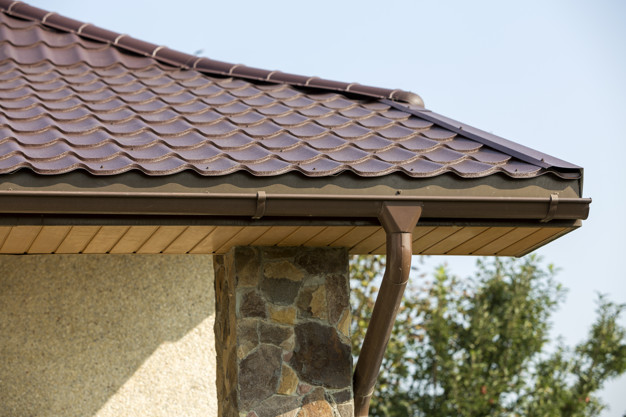Gutter Guardians: 7 Essentials To Prevent Roof Water Damage

When it comes to protecting your home, a little roof-and-gutter maintenance goes a long way toward keeping water outside and costly repairs!
Dripping ceilings rarely inspire poetry. They do, however, inspire credit-card anxiety. A tidy roof-and-gutter partnership keeps both rain and budgets in line, so we gathered seven essentials that steer water away from the living room couch and back into the yard where it belongs. Grab a mug of coffee, glance upward once, then stay on the ground and read.
1. Schedule Gutter Cleaning (and know who to call)
Layers of maple leaves, shingle grit, and last year’s Fourth of July sparkler stick quickly form a sludge that slows runoff. Twice-a-year cleaning keeps water moving. Those without a tall ladder—or without any desire to revisit high-school physics—can lean on the best farmington roofing services for safe, efficient debris removal. Prompt, professional help costs less than drywall repairs, plus it spares neighbors from the spectacle of someone wrestling a garden hose on the roof.
2. Extend Downspouts Farther Than You Think
Water spilling out only a foot from the foundation is just a puddle in training. Add a three- to four-foot extension so runoff clears planting beds and sidewalks. Flexible corrugated pipe works, though a buried PVC run looks neater and survives the lawn mower. Either way, the key word is distance. Give water room to wander and it will pick the soil, not the basement.
3. Install Leaf Guards or Screens
Gutter guards have a reputation for either saving weekends or collecting dust in the garage. Quality mesh or perforated aluminum models actually perform. Choose one matched to local foliage—small holes for pine needles, larger for broad leaves. We favor snap-in panels that can be removed for the occasional deeper clean, rather than the “permanent” versions that turn every future repair into a small excavation.
4. Mind the Roof Pitch and Flashing
Incorrect slope sends water sideways, forcing it beneath shingles where mischief thrives. During any reroof, ask for a quick pitch measurement. Even a quarter-inch over a foot matters. While the crew is up there, request a flashing inspection around chimneys, vents, and skylights. A ten-dollar piece of metal, properly bent and sealed, trumps gallons of elastomeric patch later.
5. Trim Overhanging Branches
Squirrels enjoy the highway system provided by branches touching shingles. Twigs also scrape granules from asphalt roofs, shortening life. A pole pruner removes limbs within six feet of the surface. If the oak rivals a redwood, hire an arborist rather than testing whether elbows are supposed to bend backward. Fewer branches mean fewer leaves in the gutter and less shade that fosters moss.
6. Check Attic Ventilation and Insulation
It sounds indirect, yet a well-vented attic keeps roof temperatures even. When snow melts uniformly, ice dams have little chance to form and force water under shingles. Verify that soffit vents are clear of insulation and that ridge vents are open. Add baffles if blown-in material drifts. Balanced airflow turns the attic into a neutral zone, not a sauna in July or a freezer in January.
7. Book Seasonal Roof Inspections
Roofs age more gracefully with consistent attention. A qualified technician will spot popped nails, hairline shingle cracks, or loose gutters before these issues recruit water into their cause. Spring and fall visits pair nicely with daylight-saving clock changes. That rhythm keeps minor fixes cheap and records maintenance for insurance, should a storm muscle through.
Walls stay dry, the couch remains blissfully unstained, and insurance adjusters stay away when gutters work as intended. A modest roster of tools, a reliable local roofer, and the occasional weekend afternoon add up to steady protection. Water will always seek the fastest path to the lowest point. Following these seven steps ensures that path ends in the yard rather than the living room.






